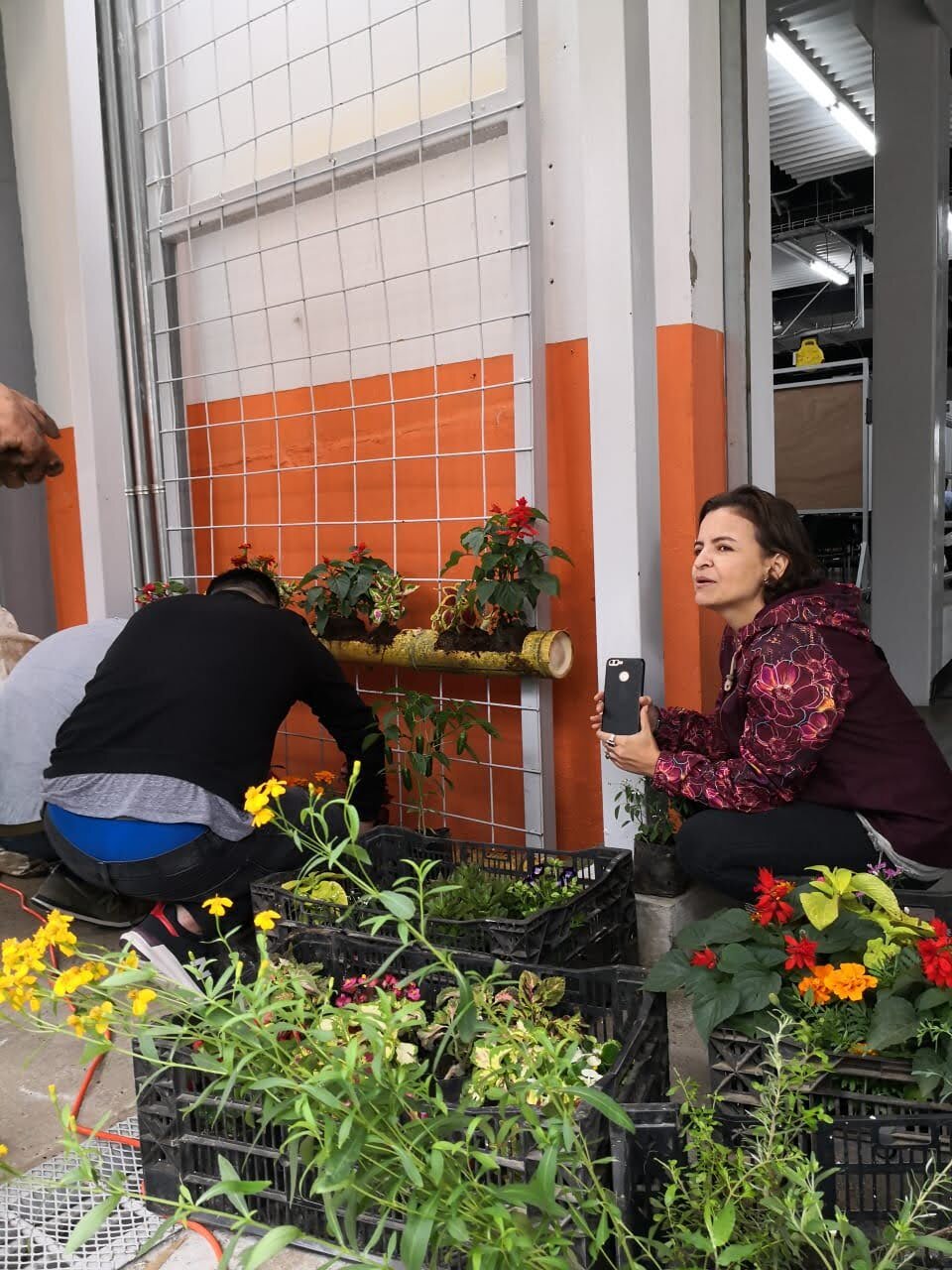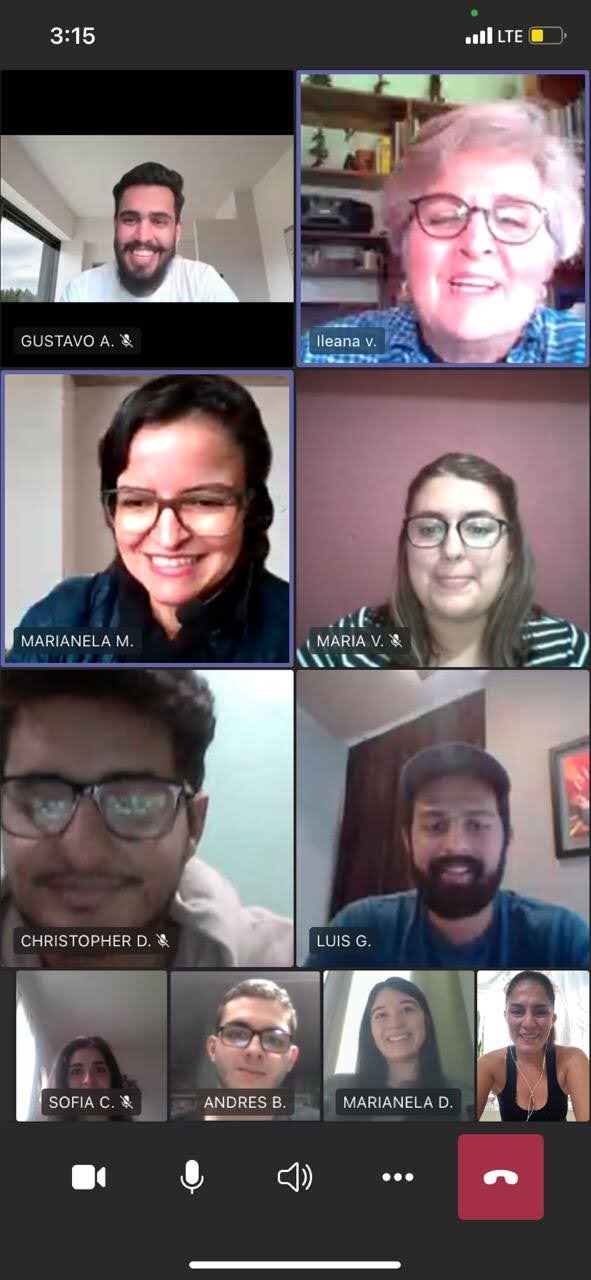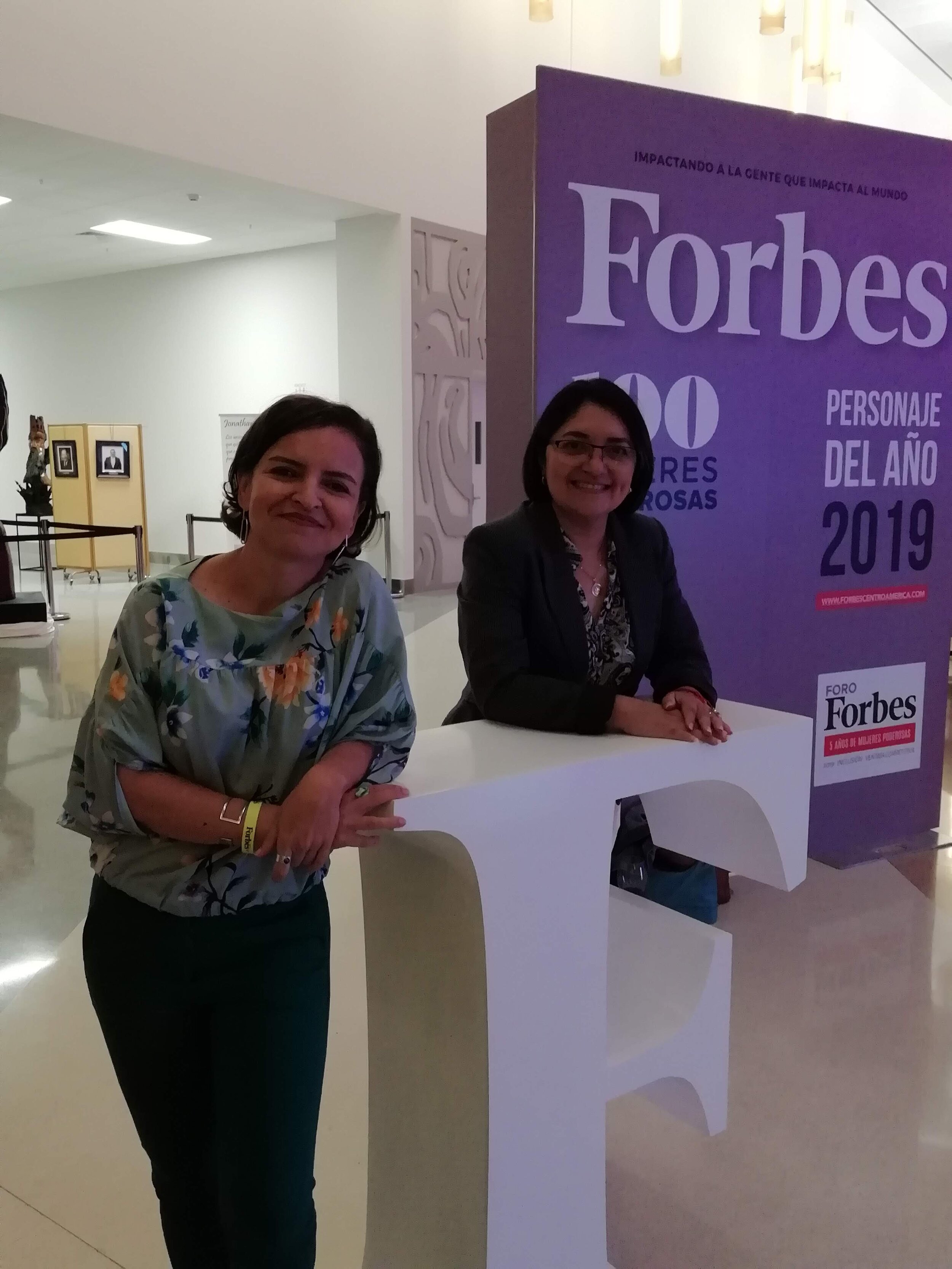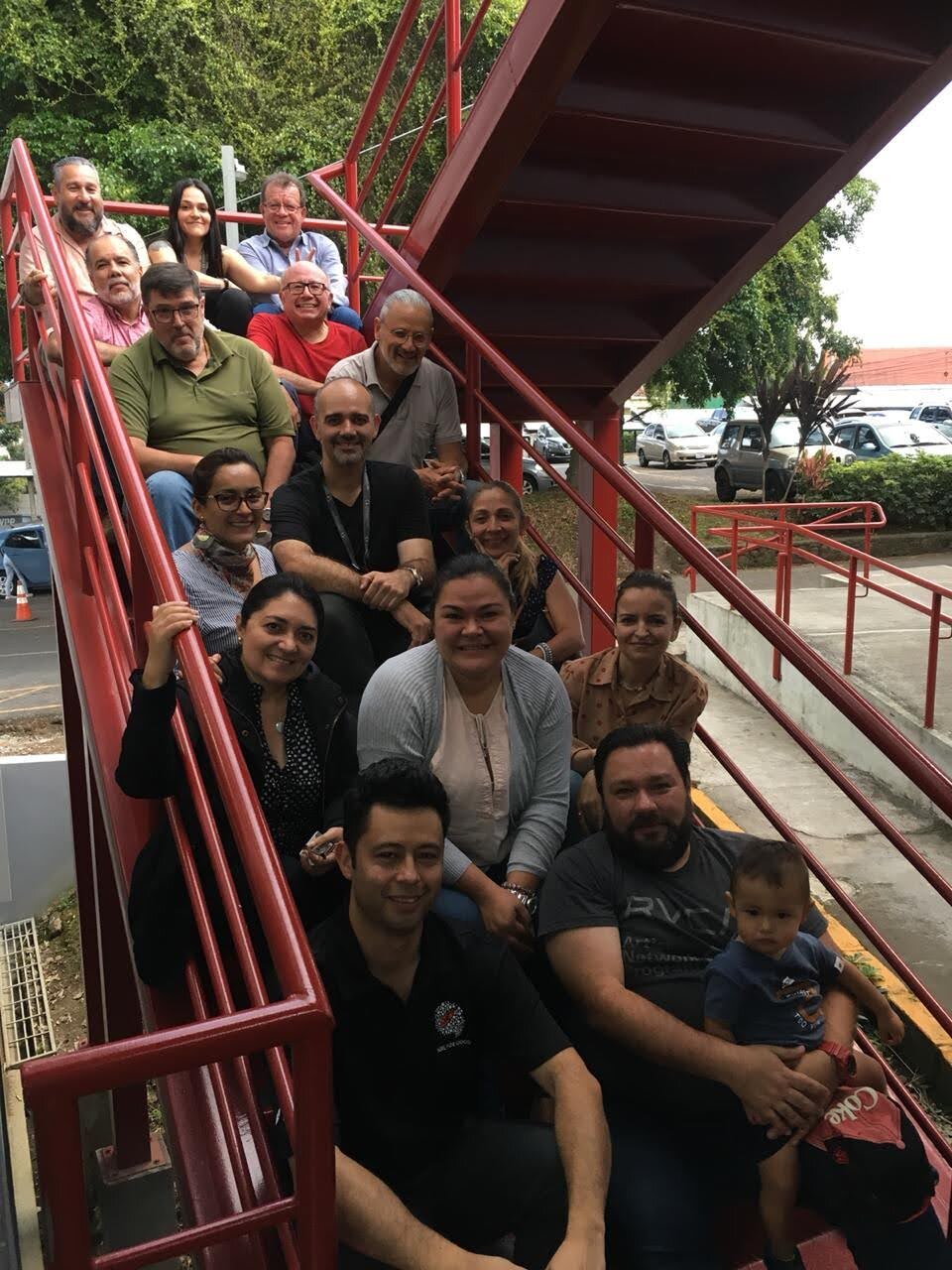MARIANELA MORA VALENCIANO
Portrait courtesy of Marianela Mora
Licenciatura en Arquitectura en la Universidad de Costa Rica
Bachelor of Architecture at the University of Costa Rica
Marianela decidió estudiar arquitectura por su afinidad con el arte y el misterio de los números. Graduada de la Universidad de Costa Rica, se ha dedicado a diseñar y construir proyectos de baja y mediana escala, buscando tener una profunda relación con el usuario y sus necesidades.
Una de sus facetas es el estudio de la filosofía y la práctica del voluntariado.
Ha mostrado un profundo interés por la docencia y lleva los últimos años dedicada a esta labor.
Amante de la naturaleza en especial las plantas y árboles, de la ciudad y los imaginarios que la conforman.
Miembro de la Comisión de Acreditación de la Escuela de Arquitectura de la Universidad Latina.
Tutora de diversos proyectos de investigación para trabajos finales de graduación y coordinadora de proyectos de responsabilidad social en diferentes comunidades del país.
Lidera un proyecto de entrevistas a arquitectas costarricenses como forma de visibilizar su labor en distintas áreas del quehacer arquitectónico, actualmente respaldado por el CACR para el desarrollo de una publicación.
English Translation:
Marianela decided to study architecture because of its affinity with art and the mystery of numbers. She graduated from the University of Costa Rica and has dedicated herself to designing and building small to medium-scale projects, seeking to have a deep relationship with the user and their needs.
One of her facets is the study of the philosophy and practice of volunteering.
She has shown a deep interest in teaching and has spent the last years dedicated to this work.
Lover of nature, especially plants and trees, of the city and the imaginaries that make it up.
She is a member of the Accreditation Commission of the School of Architecture at the Universidad Latina.
She tutors various research projects for final graduation and coordinates projects having to do with social responsibility in different communities of the country.
She leads a project of interviews with Costa Rican women architects as a way of making their work visible in different areas of architecture, currently, she is being supported by the CACR for the development of a publication.
Transcending Past Patriarchal Forms of Architecture in Costa Rica
¿Qué te inspiró a seguir una carrera en arquitectura?
Creo que me atraía el proceso de creación, la búsqueda de orden, de armonía. Pero al mismo tiempo veía a los arquitectos como seres especiales y quería ser así. También pensaba en la arquitectura como un arte mayor.
English Translation:
What inspired you to pursue a career in architecture?
I think the process of creation attracted me, the search for order, and harmony. At the same time, I saw architects as special beings and wanted to be that way. I also thought of architecture as a higher form of art.
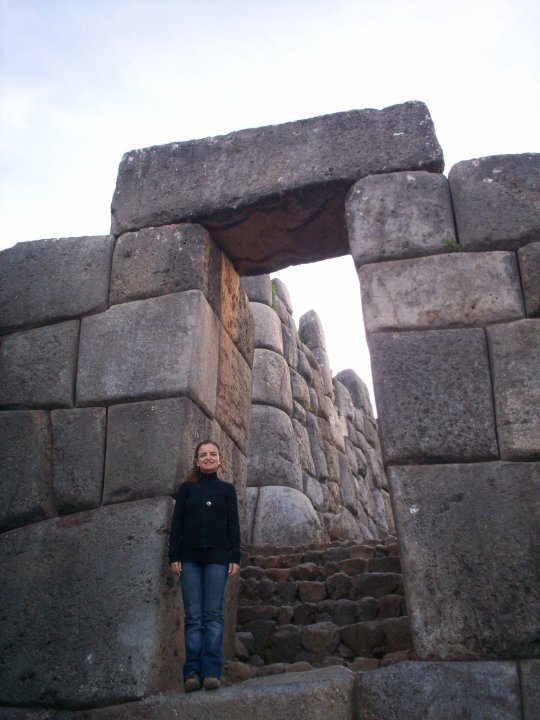


Visita a Perú. Photo Courtesy of Marianela Mora.
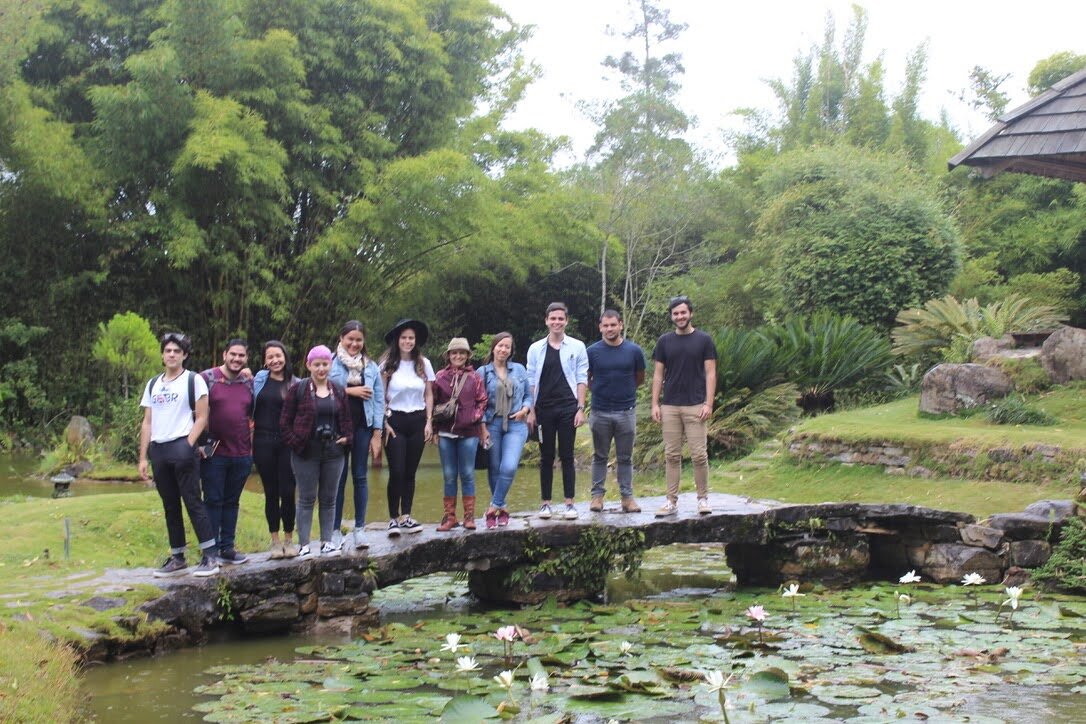
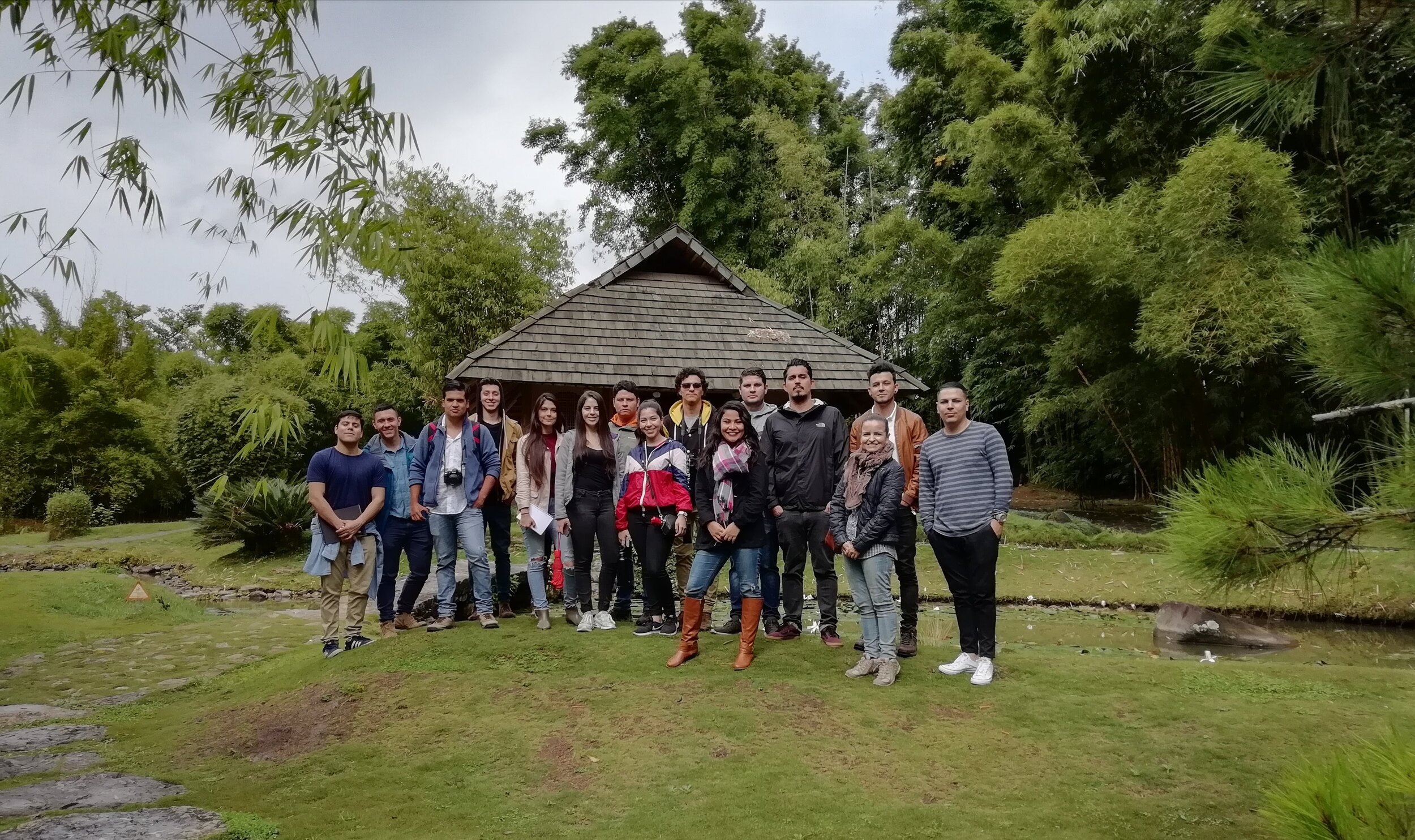
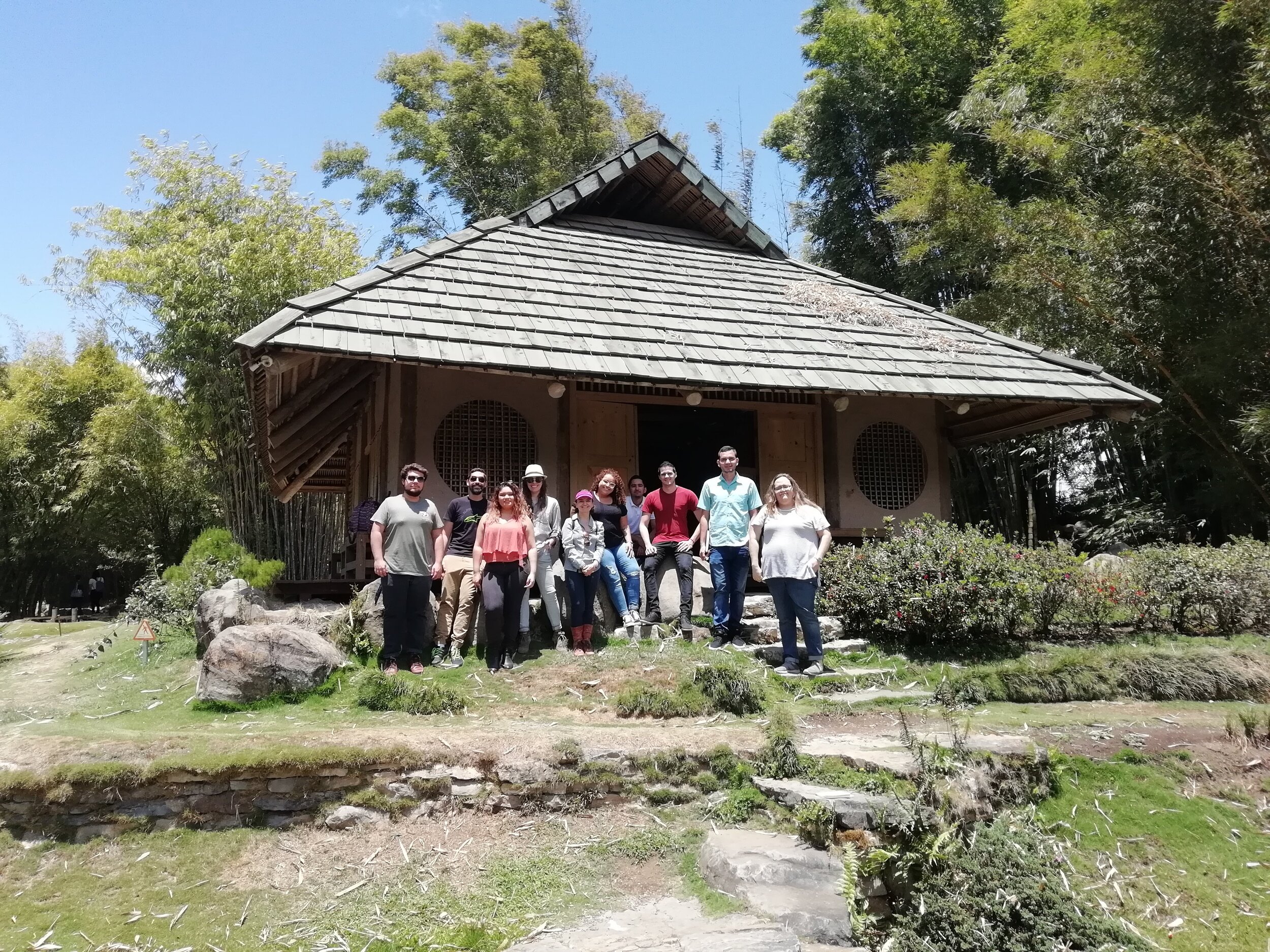
Gira a Jardín Botánico. Photo Courtesy of Marianela Mora.
¿Cómo describes la profesión de la arquitectura en Costa Rica? ¿Es igual entre hombres y mujeres?
En Costa Rica hay muchas oportunidades y de cierta manera hay una igualdad de condiciones para mujeres y hombres, al menos aparente. Considero que son de manera aparente porque sigo sin ver que la sociedad destaque a mujeres arquitectas y no creo que tengan menos mérito o menos capacidades. Es posible que esto vaya cambiando, hace 40 años aún eran muy pocas mujeres estudiando arquitectura y persistía la idea de que estudiaban mientras conseguían un hombre para casarse. Hoy la cantidad de mujeres que estudian y se desempeñan en el ámbito de la arquitectura son muchas más. Pero a mí me surgen muchas preguntas, sobre por qué no se destacan ¿quieren las mujeres figurar menos? ¿quieren las mujeres participar más en trabajos colaborativos?, ¿sienten las mujeres empoderamiento para hacer prevalecer sus ideas?, ¿son las mujeres a veces puestas en 2do plano con relación a una pareja arquitecto? ¿simplemente sus aportes no son valorados de la misma manera? Lo que sí sé es que, en las escuelas de arquitectura, los maestros, las figuras que se admiran siguen siendo de género masculino. Aún hay mucho trabajo por hacer y por investigar.
English Translation:
How do you describe the profession of architecture in Costa Rica? Is it the same between men and women?
In Costa Rica, there are many opportunities and in a certain way there are equal conditions for women and men, at least it looks like that. I consider that they are in an apparent way because I still do not see that society highlights women architects, and I do not believe that they have less merit or fewer capacities. It is possible that this will change, 40 years ago there were still very few women studying architecture and there was this persistent idea that women were just studying while they found a man to marry. Today the number of women who study and work in the field of architecture are many more, but I still have many rising questions about why they do not stand out, do women want to appear less? Do women want to participate more in collaborative work? Do women feel empowered to make their ideas prevail? Are women put second compared to their male colleagues? Are their contributions simply not valued in the same way? What I do know is that in architecture schools, the teachers, the figures that are admired are still male. There is still a lot of work to do and to investigate.
Presentación de trabajo final de graduación. Photo Courtesy of Marianela Mora.
En Jornada Docente. Photo Courtesy of Marianela Mora.
¿Cuándo decidió que quería enseñar arquitectura en un nivel educativo?
De cierta manera fue azaroso, me invitaron a impartir un curso y me animé…lo disfruté muchísimo y al parecer los estudiantes también. Poco a poco me fui introduciendo en el ámbito académico, para descubrir que es un mundo muy interesante, muy retante y de constante mejoramiento. También descubrí que el intercambio humano que se da me permite sentir que de alguna manera estoy aportando algo, me recuerda una frase de Simone de Beauvoir “La vida de uno tiene valor siempre que uno atribuya valor a la vida de los demás”
English Translation:
When did you decide that you wanted to teach architecture at an educational level?
In a way it was random, they invited me to teach a course and I was encouraged ... I really enjoyed it and apparently, the students did too. Little by little I was introduced to the academic field; I discovered that it is a very interesting world, very challenging, and constantly improving. I also discovered that the human exchange that occurs allows me to feel that in some way I am contributing something, it reminds me of a phrase by Simone de Beauvoir "One's life has value as long as one attributes value to the lives of others".
Ingreso a la carrera académica. Profesor Adjunto. Photo Courtesy of Marianela Mora.
1. Jardín vertical en la Escuela. 2. Mesa redonda con estudiantes y la destacada arquitecta Ileana Vives Profesor Adjunto. 3. En el foro forbes con mi colega Eva Molina. Photos Courtesy of Marianela Mora.
Como profesora de arquitectura, ¿qué cambios le gustaría ver en la educación costarricense en cuanto a arquitectura?
Claramente la inclusión de muchos más ejemplos de arquitectas mujeres y esto trato de hacerlo en mis cursos. El entendimiento de que las visiones de las mujeres son imprescindibles en el análisis de los proyectos, de los sitios, de los usuarios, la inclusión del urbanismo feminista. Nuestra cultura aún es altamente patriarcal por lo que nuestros sistemas de academia-escuela lo siguen siendo. El crear ambientes donde la autoestima del estudiante se vea favorecida en lugar de empobrecida y donde pueda desarrollar su libertad de pensamiento.
English Translation:
As an architecture teacher, what changes would you like to see in architecture education?
Clearly the inclusion of more examples of female architects, I try to do in my courses. The understanding that women's visions are essential in the analysis of projects, sites, users, and the inclusion of feminist urbanism. Our culture is still highly patriarchal so our academy-school systems continue to be. Creating environments where the student's self-esteem is enhanced rather than impoverished and where they can develop their freedom of thought.
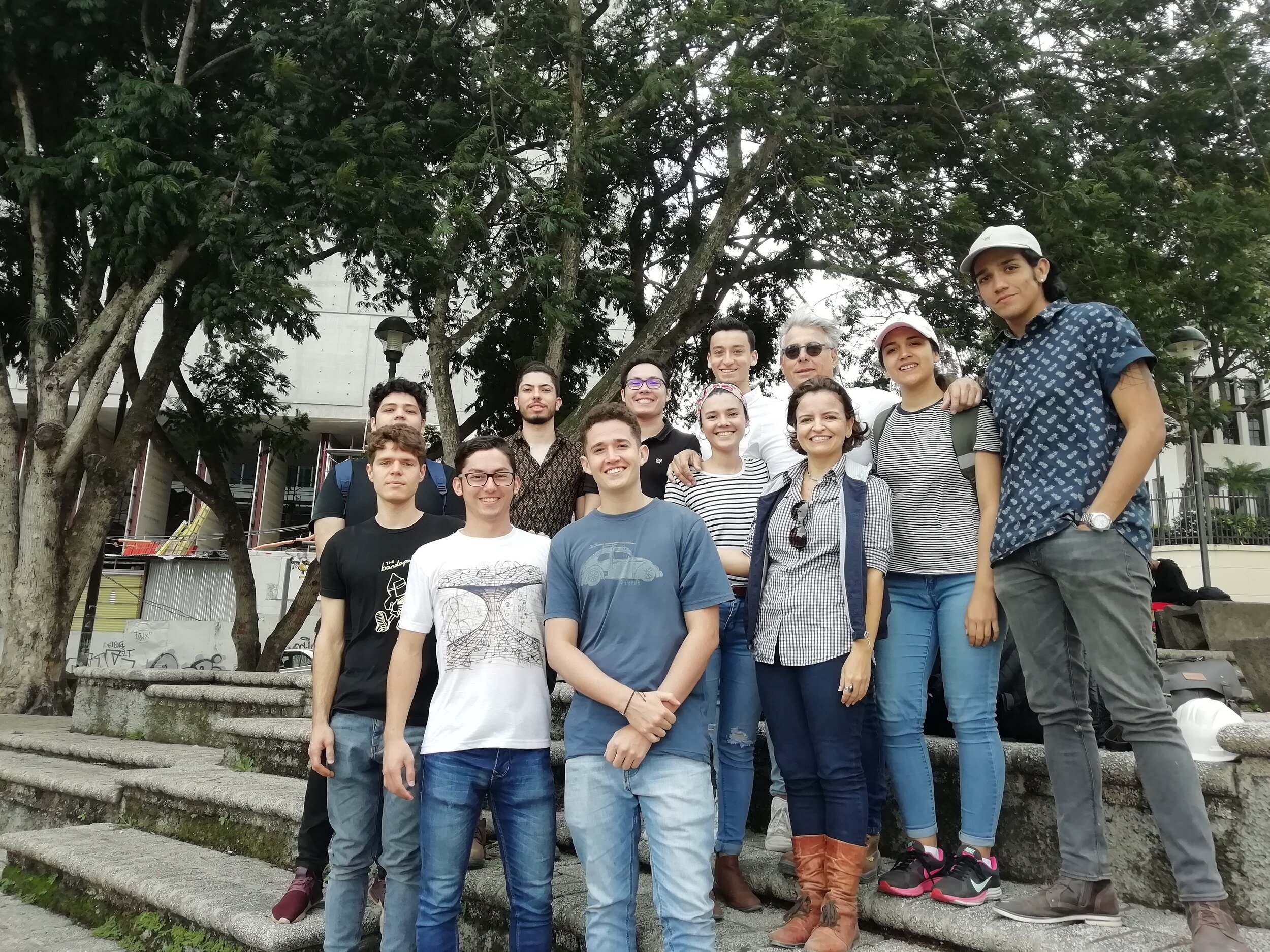
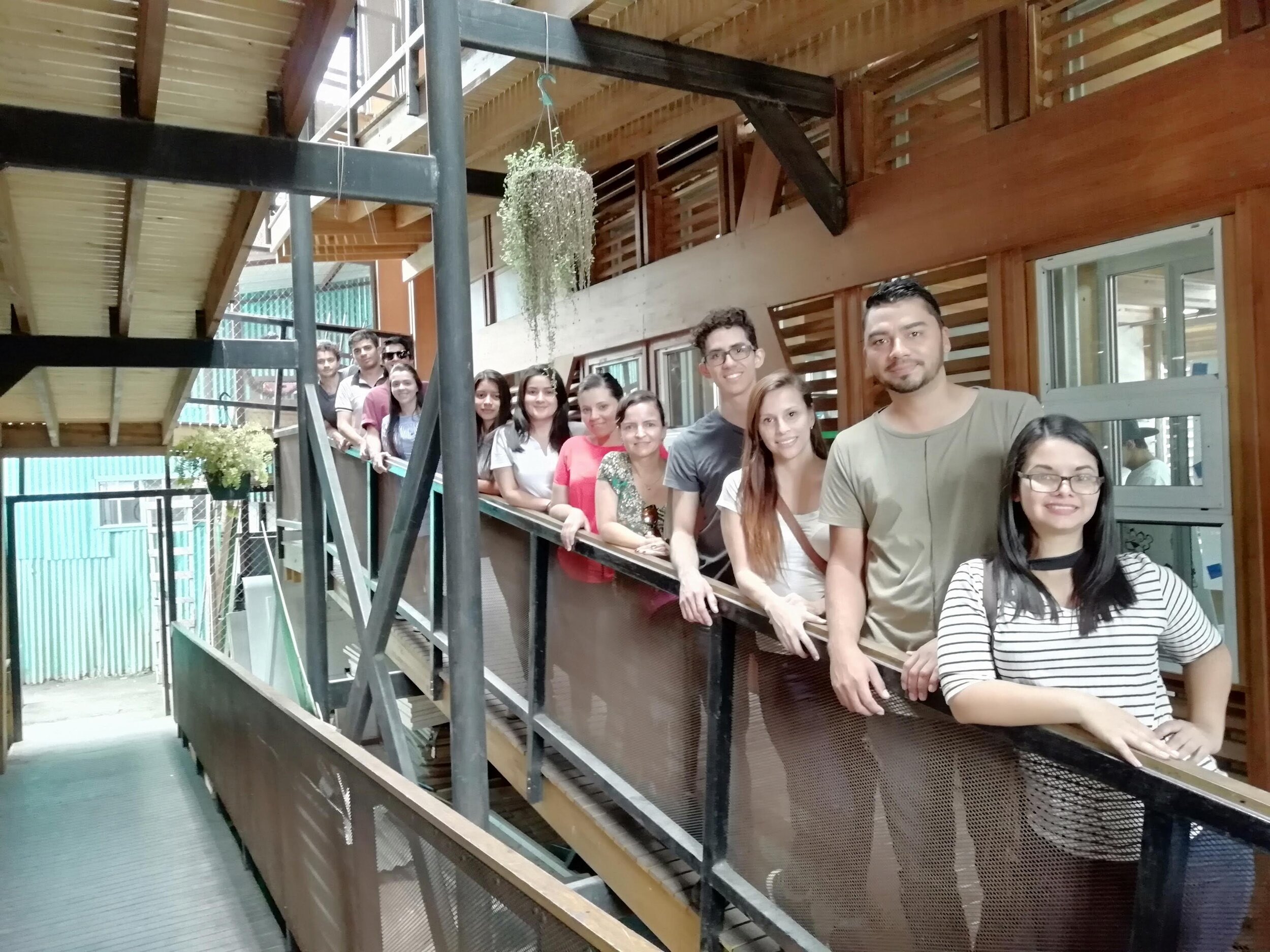
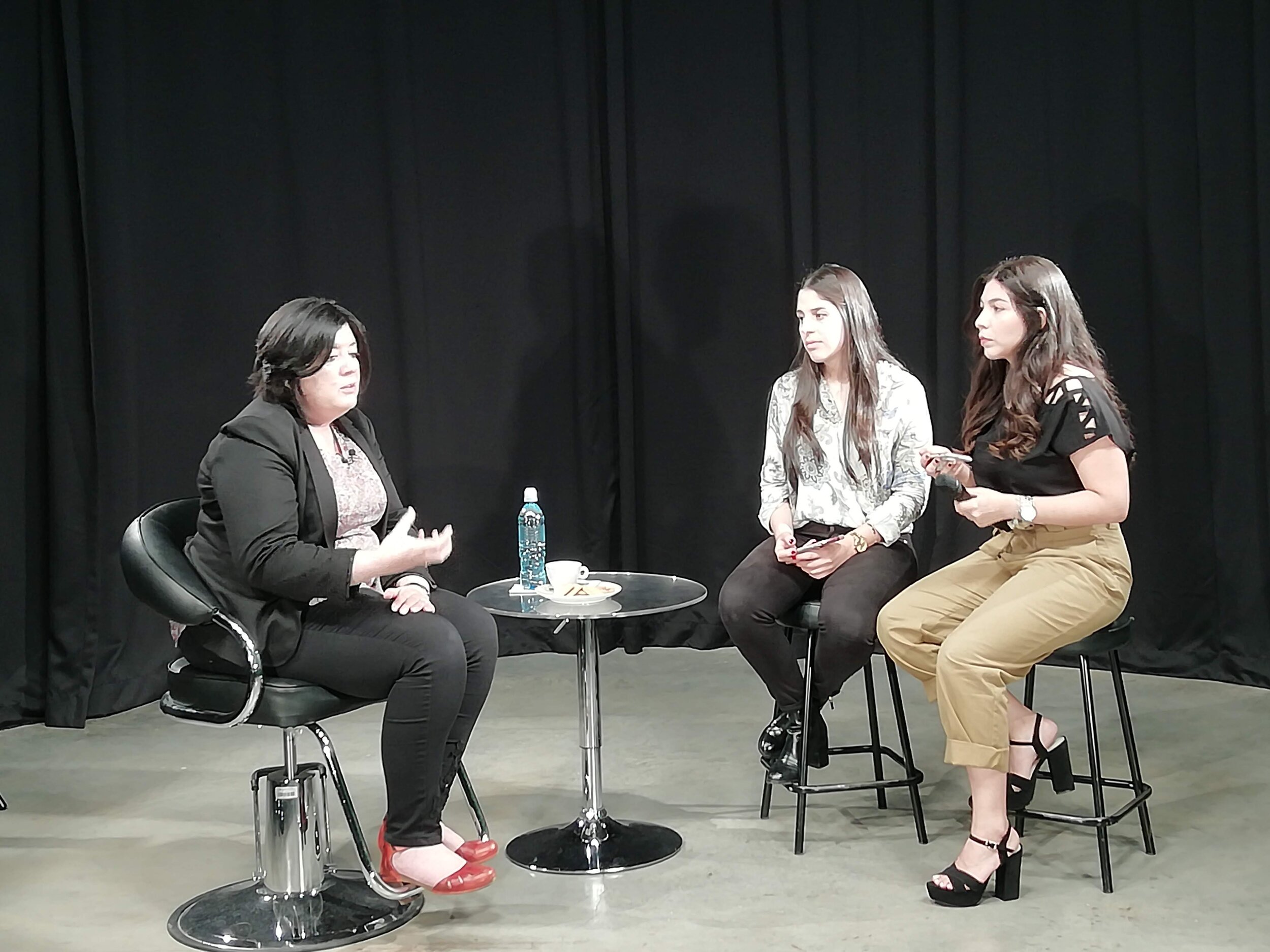

1. Gira Académica. 2. En centro social que atiende a comunidad en riesgo social. 3. Estudiantes entrevistando a la destacada arquitecta dra.Zuhra Sasa. 4. Gira al edificio de la nueva asamblea legislativa en construcción. Photos Courtesy of Marianela Mora.
¿Cuál es el enfoque de su Curso llamado Arquitectura y sus Tendencias Contemporáneas?
Este es el primer curso que inicié impartiendo, dónde encuentro que los estudiantes deben tener una visión de qué está pasando en nuestra cultura para poder plantearse hacia donde deberían ir las respuestas arquitectónicas, para en lugar de ser reactivos a las necesidades de la sociedad, puedan ser propositivos y plantear cambios dentro de un paradigma regenerativo. Además de esto, observó que deben estar enraizados en su contexto, en su territorio y hay muchos vacíos al respecto. Han estudiado la arquitectura universal más no la local y si bien la globalización ha diluido los bordes entre lo local y lo global, es necesario el estudio de nuestra identidad, del porqué los caminos que ha tomado la arquitectura latinoamericana y de Costa Rica. Con este enfoque profundizamos el estudio y crítica de las expresiones arquitectónicas contemporáneas y construimos planteamientos para el futuro.
English Translation:
What is the focus of your Course called Architecture and its Contemporary Trends?
This is the first course that I started teaching, where I find that students must have a vision of what is happening in our culture to be able to consider where the architectural responses should go, so instead of being reactive to the needs of society, they can be proactive and propose changes within a regenerative paradigm. In addition to this, I observed that they must be rooted in their context, in their territory and there are many gaps in this regard. They have studied universal architecture but not local architecture, and although globalization has diluted the borders between the local and the global, it is necessary to study our identity as to why Latin American and Costa Rican architecture has followed certain paths. With this approach, we deepen the study and criticism of contemporary architectural expressions and we build approaches for the future.

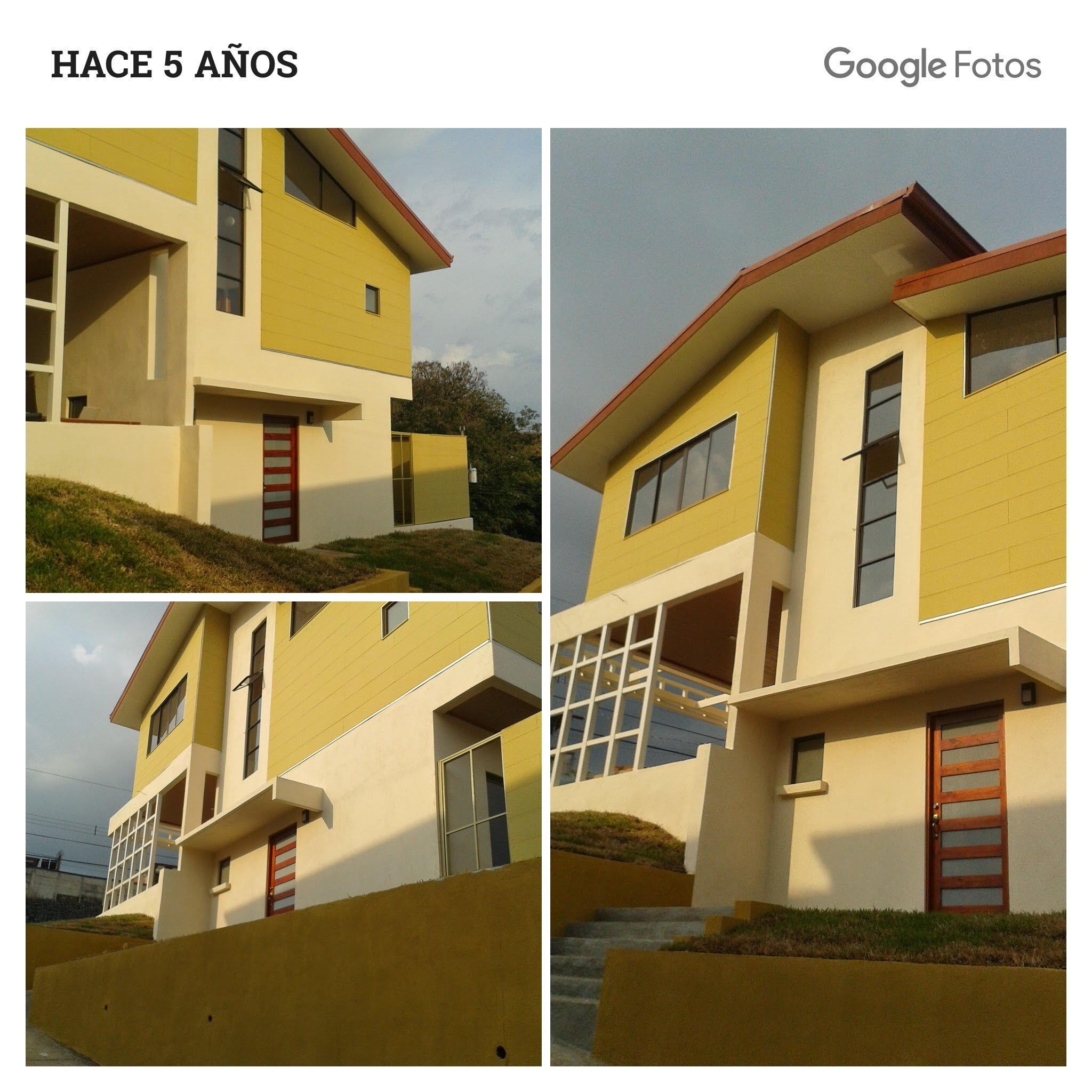
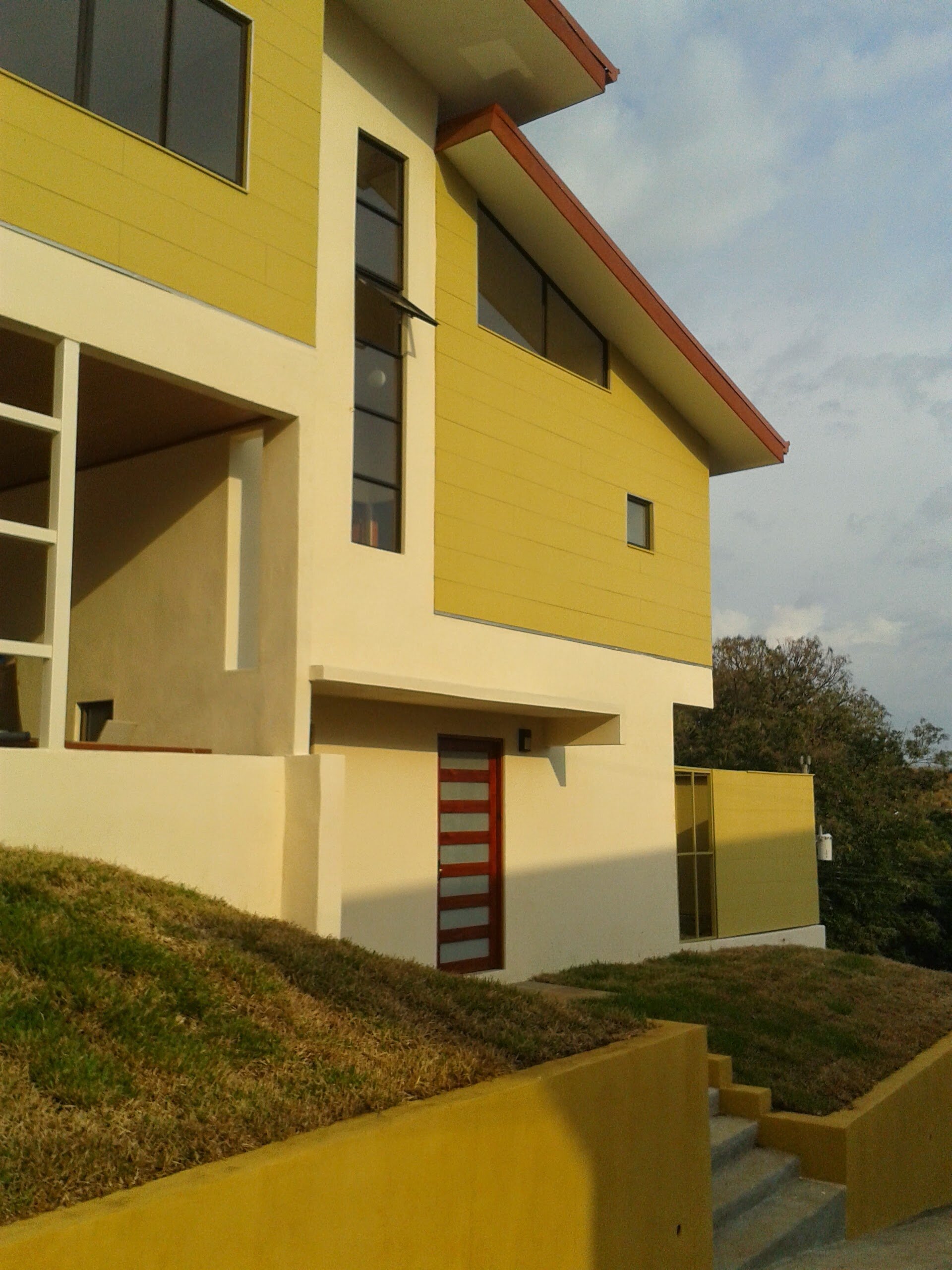
1. Iniciando proyecto. 2/3. Proyecto terminado. Photos Courtesy of Marianela Mora.
Con colegas después de una charla con visitas internacionales. Photo Courtesy of Marianela Mora.
Describe el libro que estás escribiendo actualmente, ¿qué cambios espera que traiga?
El libro es sobre los aportes de 7 destacadas arquitectas costarricenses que han hecho aportes en distintas áreas, como la academia, la sostenibilidad, el ejercicio profesional, la accesibilidad, el patrimonio, etc. Hará un repaso sobre el papel de la mujer en el área de la arquitectura en la historia de nuestro país, mencionando las primeras arquitectas en ocupar puestos de liderazgo en distintas instituciones del país y en obtener reconocimientos. Luego presentará una semblanza de cada una de las arquitectas, las cuales serán escritas por mujeres, 5 arquitectas, 1 antropóloga y 1 historiadora. Además, se analizará la obra de cada una de ellas.
Considero que el principal aporte será contar con este material de estudio y consulta en las escuelas de arquitectura y para el gremio y sociedad en general y con esto visibilizar el valioso aporte de las arquitectas mujeres a la historia de Costa Rica. También proponer referentes a ser admiradas en el campo de la arquitectura y poner en valor el quehacer del arquitecto que tiene mucho valor para nuestra sociedad, más allá de la obra construida.
English Translation:
Describe the book you are currently writing, what changes do you hope it brings?
The book is about the contributions of 7 prominent Costa Rican architects who have made contributions in different areas, such as academia, sustainability, professional practice, accessibility, heritage, etc. It will review the role of women in the area of architecture in the history of our country, mentioning the first female architects to hold leadership positions in different institutions in the country and to obtain recognition. It will present a profile of each of the architects, which will be written by women, 5 architects, 1 anthropologist, and 1 historian. In addition, the work of each of them will be analyzed. I believe that the main contribution will be to have this study and consultation material in the architecture schools; for the union and society, in general, to make visible the valuable contribution of women architects to the history of Costa Rica. To propose that women be admired and given credit in the field of architecture and to obtain the value that these architects bring to society, beyond the built work.
Con compañeros después de jornada.. Photo Courtesy of Marianela Mora.
Presentación pública de trabajo final de graduación. Photo Courtesy of Marianela Mora.
Marianela eres una verdadera líder e inspiración para las mujeres costarricenses. ¿Qué consejo le darías a la próxima generación de arquitectas costarricenses?
Visualicen lo que quieren ser y no se limiten en esa aspiración, es importante sentirnos dueñas de quienes queremos y podemos ser. Den mucho valor a la forma en que ven el mundo. La arquitectura es una forma de servir a los demás y de mejorar su calidad de vida, creo que, con eso en mente, se puede crecer y realizarse en muchos campos.
English Translation:
Marianela you are a true leader and inspiration for Costa Rican women. What advice would you give the next generation of Costa Rican architects?
Visualize what you want to be and do not limit yourself in that aspiration, it is important to feel that we own who we want and can be. Place a lot of value on the way you see the world. Architecture is a way of serving others and improving their quality of life, believe that, with that in mind, you can grow and realize yourself in many fields.
En obra. Photo Courtesy of Marianela Mora.






